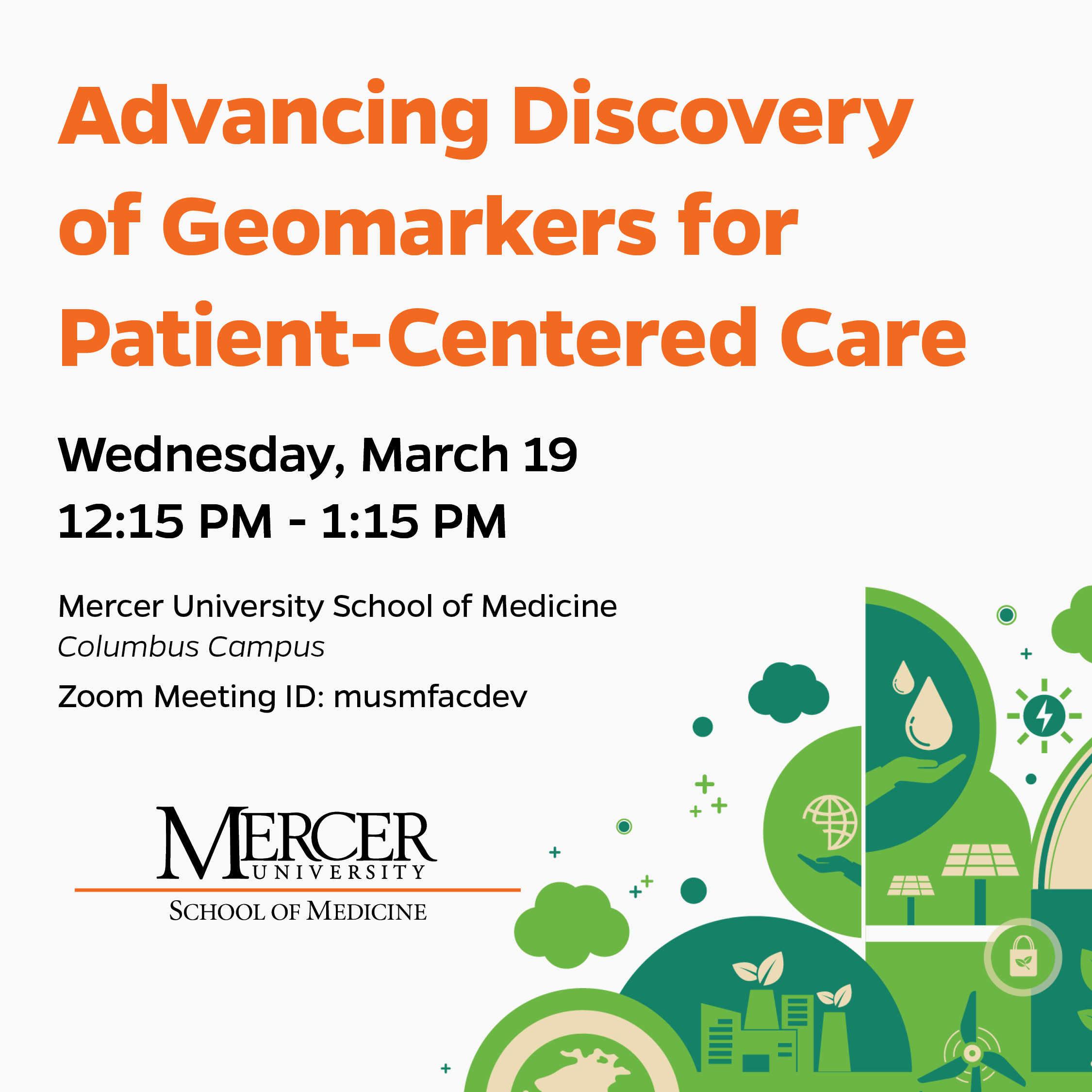
- This event has passed.
3.19.25 | 12:15pm - 1:15pm

Presented by Jacqueline W. Curtis, Ph.D., Associate Professor, Co-Director, GIS Health & Hazards Lab, Department of Population and Quantitative Health Sciences, School of Medicine, Case Western Reserve University and Visiting Associate Professor, Mercer University School of Medicine, Columbus, Georgia
Learning Objectives:
– Understand how 80% of patient health can be addressed outside of clinic walls
– Understand current applications of geospatial technologies and data in clinical medicine
– Identify geomarkers as complements to biomarkers for patient-centered care
Details
The National Academy of Medicine estimates that approximately 20% of patient health can be addressed through medical care within clinic walls, but that 80% is driven by what happens beyond. Geomarkers are an emerging way to characterize this 80%. They are complements to biomarkers and are based on data from the full suite of geospatial technologies, such as GPS-enabled sensors (e.g., air quality) and satellite data (e.g., heat exposure). These and other environmental exposures can be integrated with social determinants of health and then linked to patient-level data in Electronic Health Records (EHRs) through Geographic Information Systems (GIS). This approach enables more comprehensive and personalized health care.